Legado nuclear: os níveis de radioatividade em Chernobyl e Fukushima
Os desastres nucleares de Chernobyl e Fukushima tiraram inúmeras pessoas de suas casas e suas vidas. Tudo ficou para trás. Isso pode explicar porque tantas pessoas optam a voltar para as áreas já categorizadas como “limpas”. Essa limpeza é oriunda da descontaminação feita pelos governos da Rússia e do Japão, e que não é tão efetiva quanto deveria ser. Áreas já descontaminadas podem receber mais radiação trazida pelo vento, por exemplo. A herança radioativa continuará por muito tempo naquelas terras.
O projeto Nuclear Legacy, de Greg McNevin junto do Greenpeace, une dados de níveis de radiação com fotografias de longa exposição.
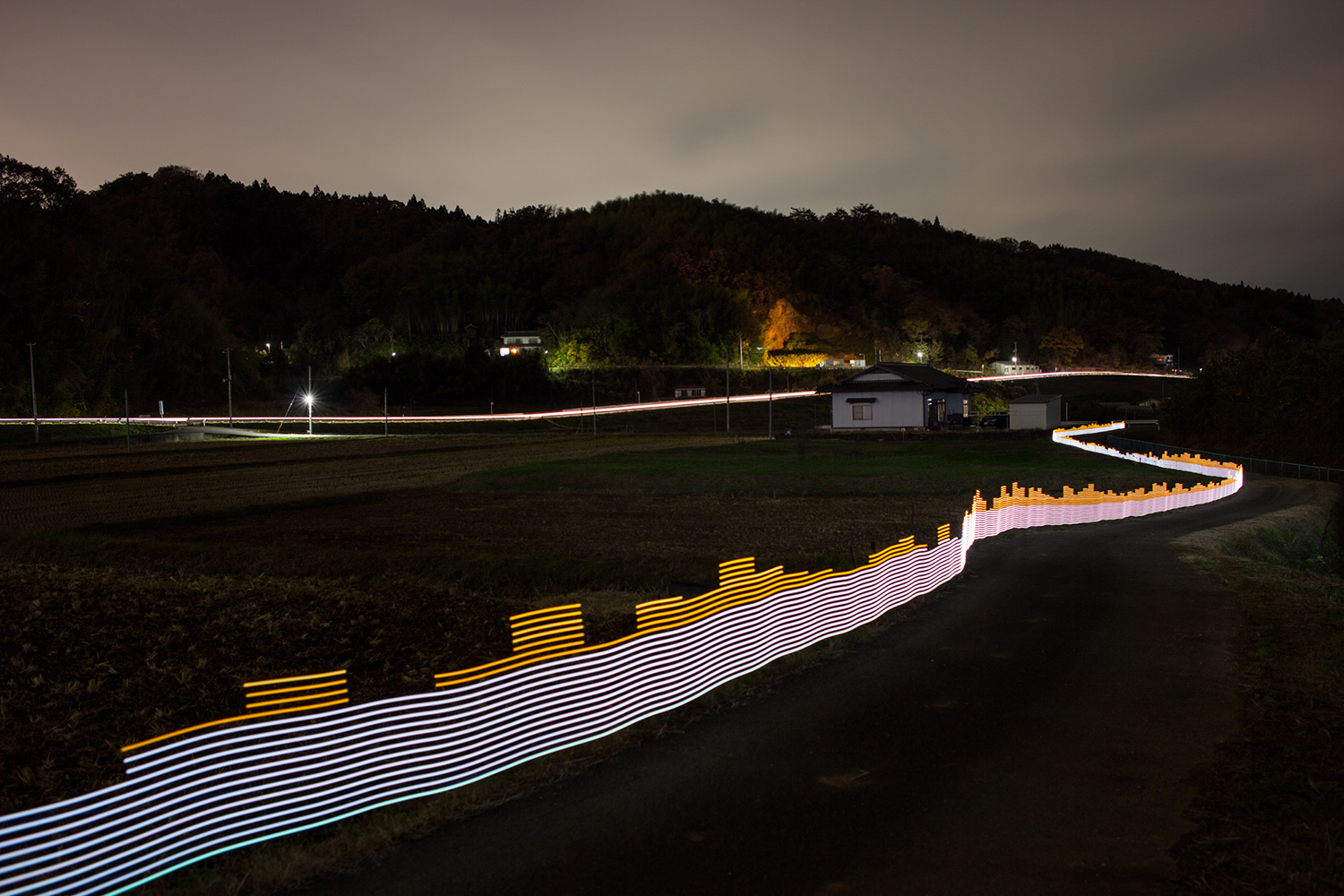
Campo de arroz em Fukushima, Japão
Usando um bastão de LED ligado a um Geiger counter (equipamento que mede níveis de radiação), McNevin caminhava em frente à câmera que fotografava em longa exposição, posicionada em áreas afetadas. O equipamento de medição transforma os dados captados numa resposta no display de luz, mostrando os níveis através de cores.
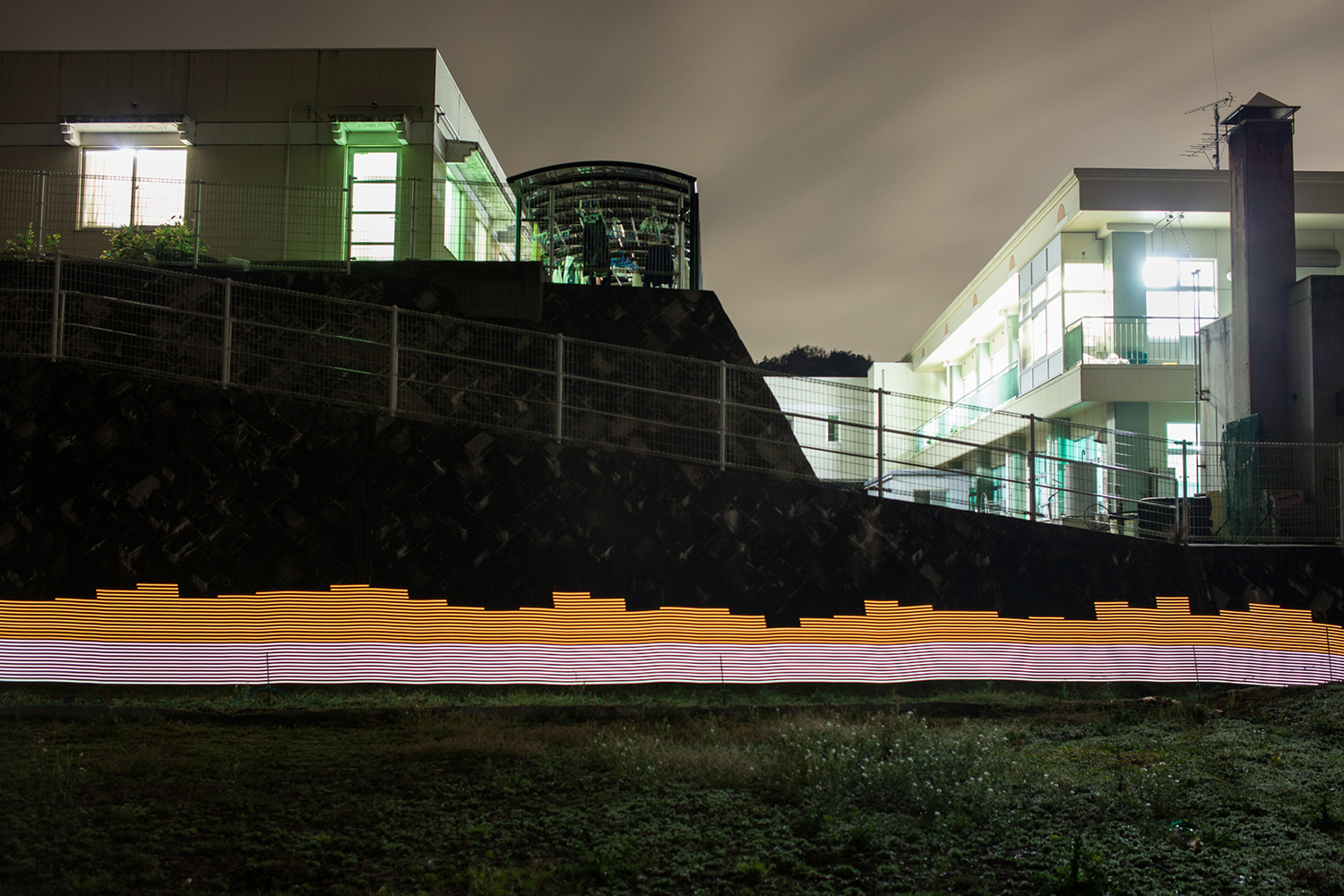
Escola em Onami, Fukushima
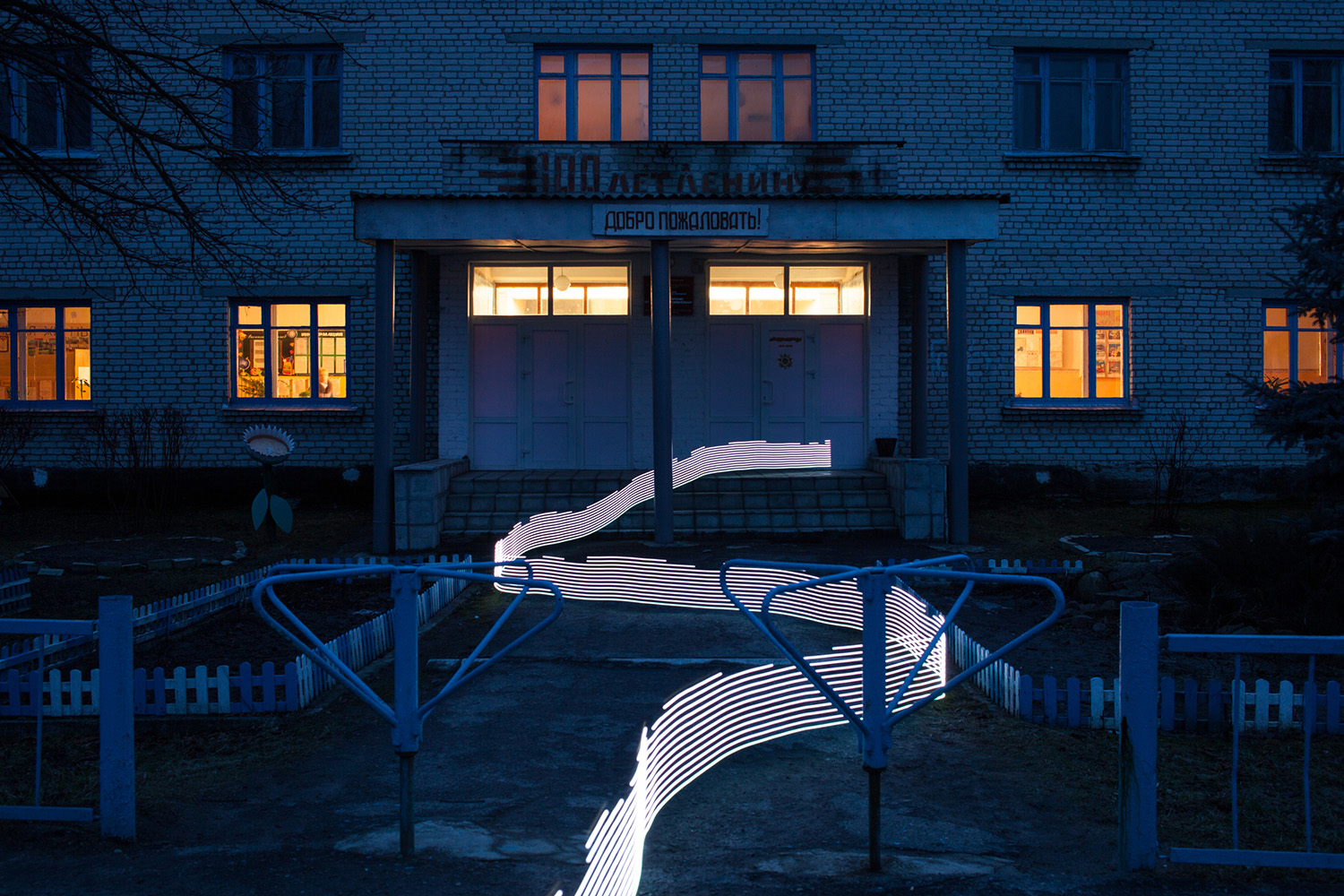
Escola em Chernobyl, Rússia
As cores dos gráficos de barra gerados nas imagens correspondem aos níveis de radiação encontrados. O branco demonstra níveis mais baixos de radiação, o laranja e o vermelho apontam níveis críticos.
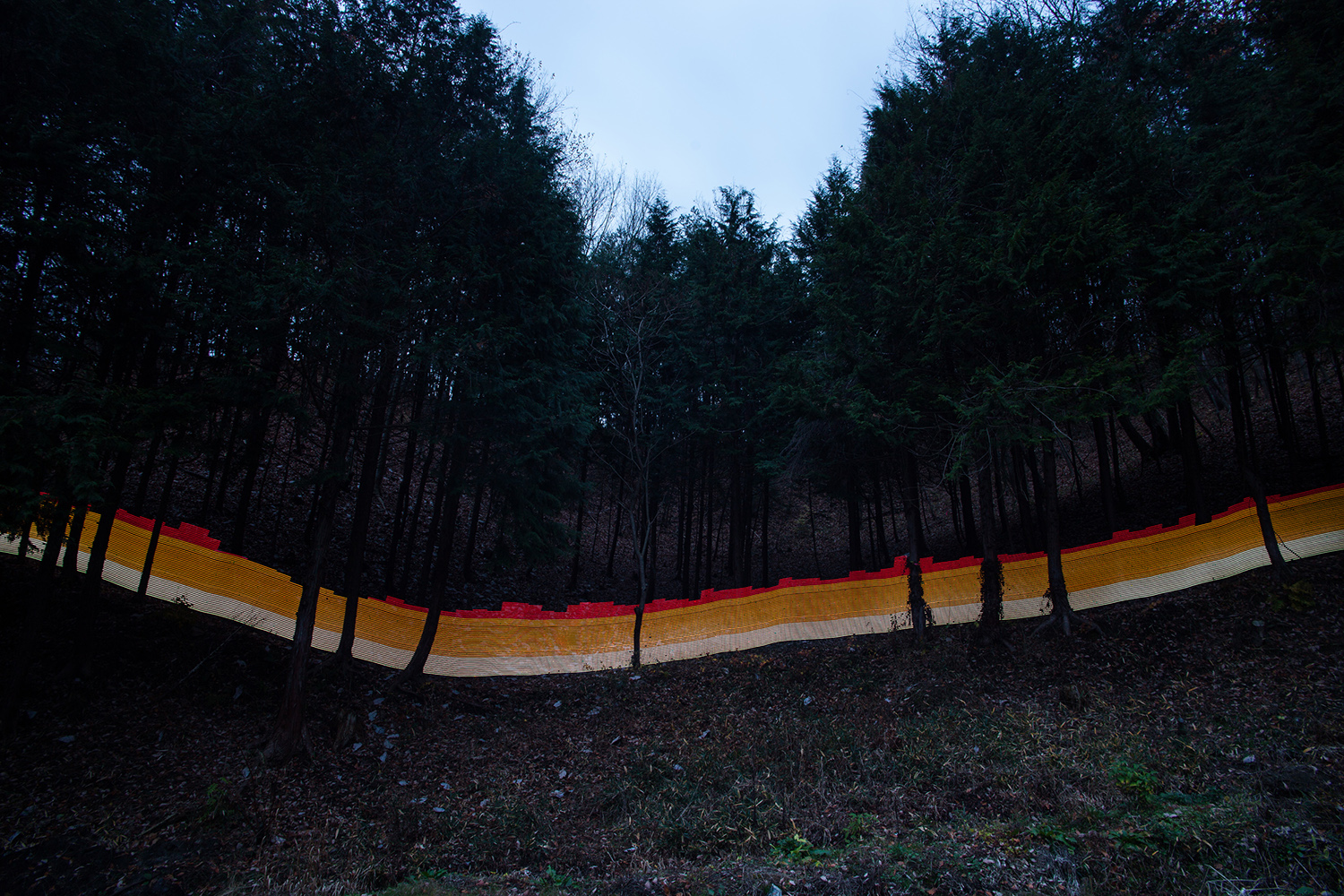
Floresta em Fukushima

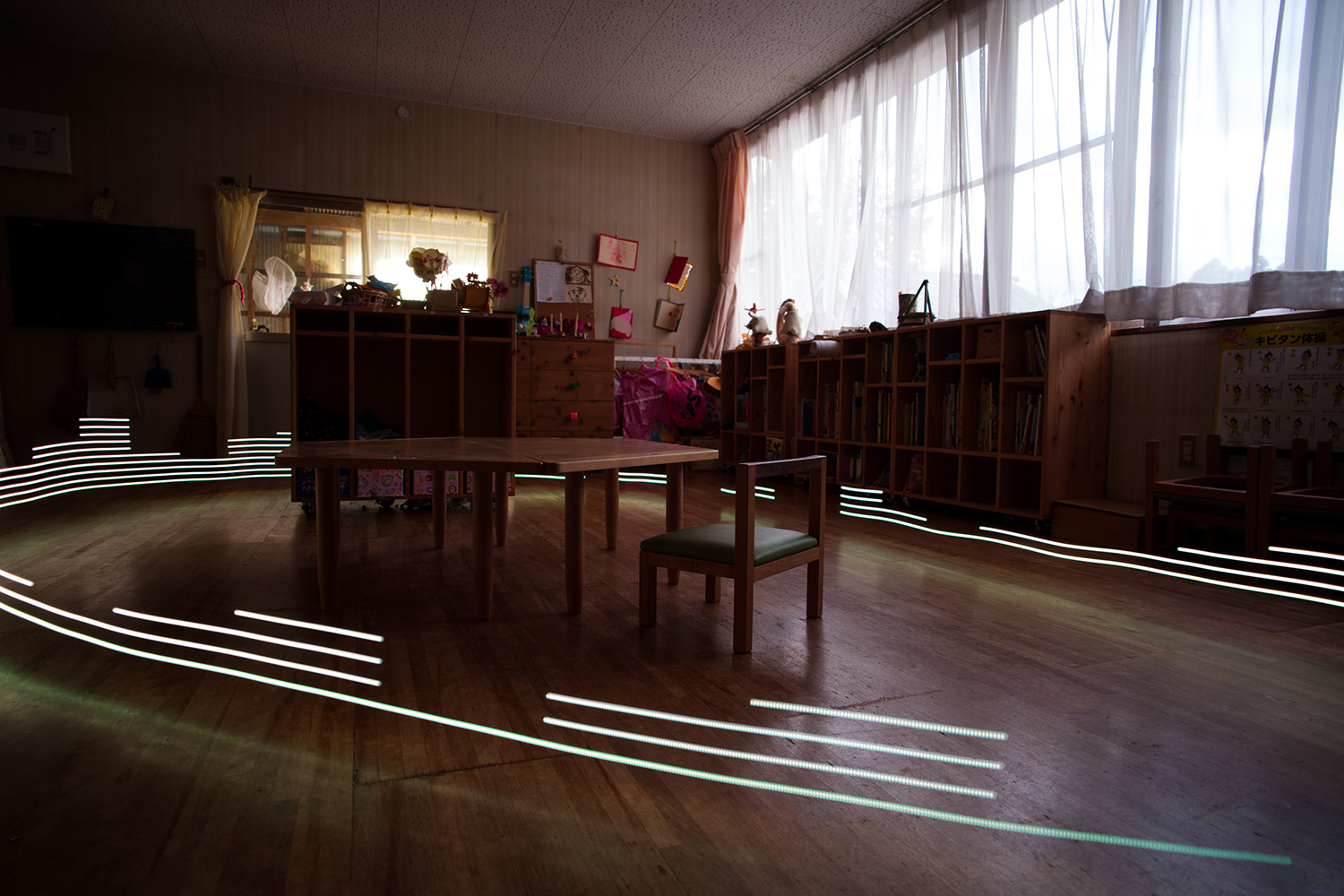
Escola hospitalar em Fukushima

Fukushima, Japão
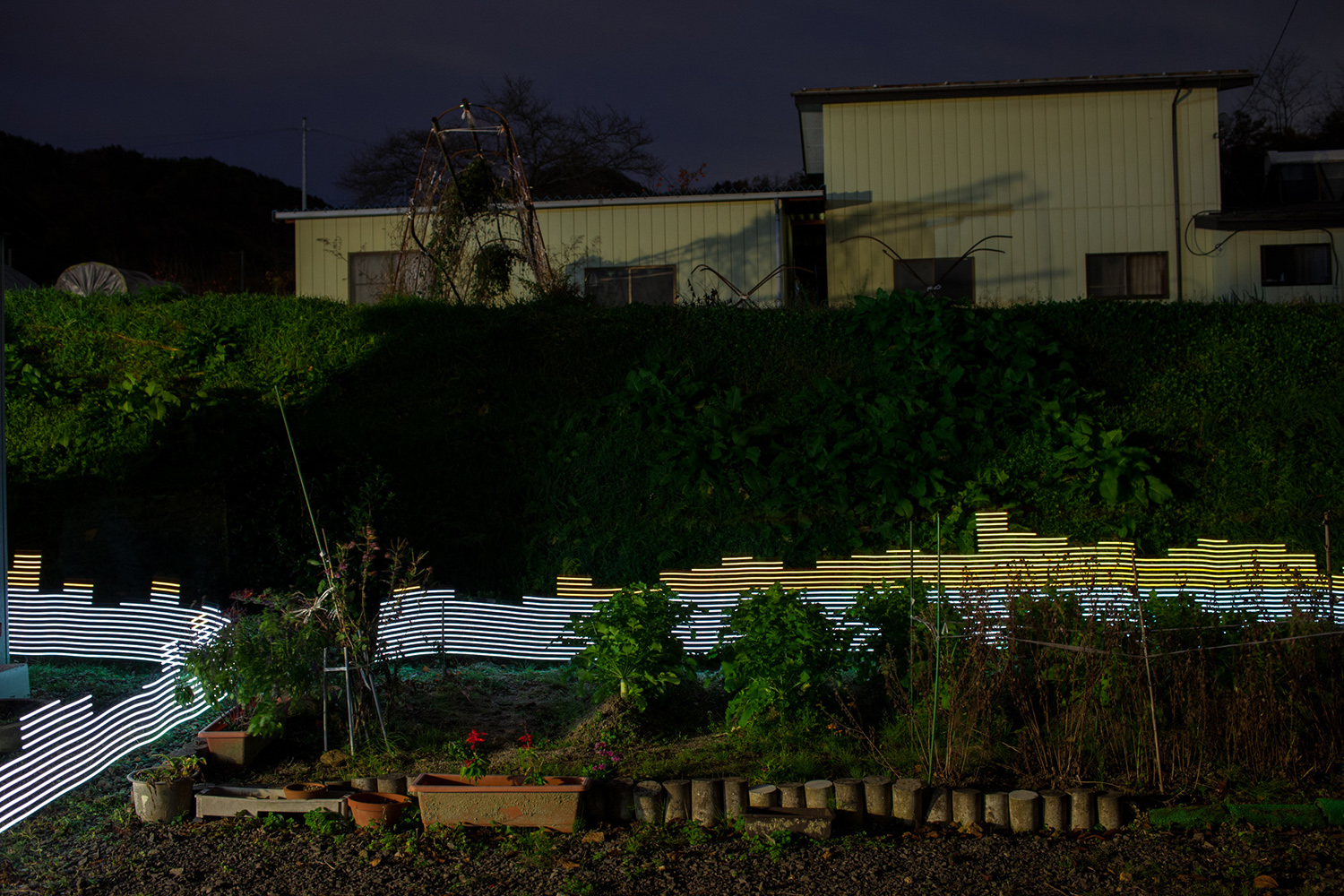
Jardim em Fukushima
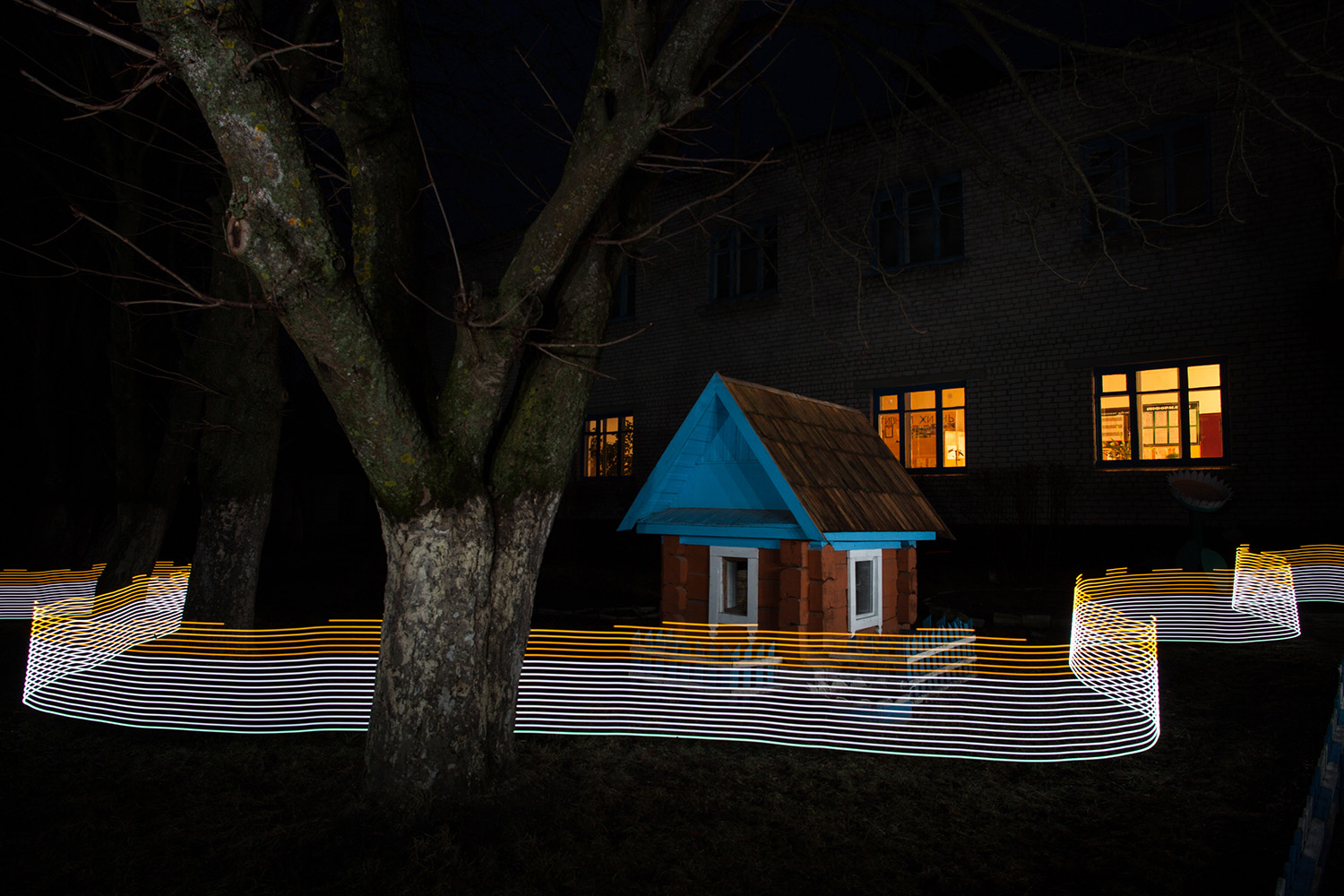
Outra escola em Chernobyl
A proposta do projeto não é científica, e os autores informam que seus resultados são “meramente artísticos”.
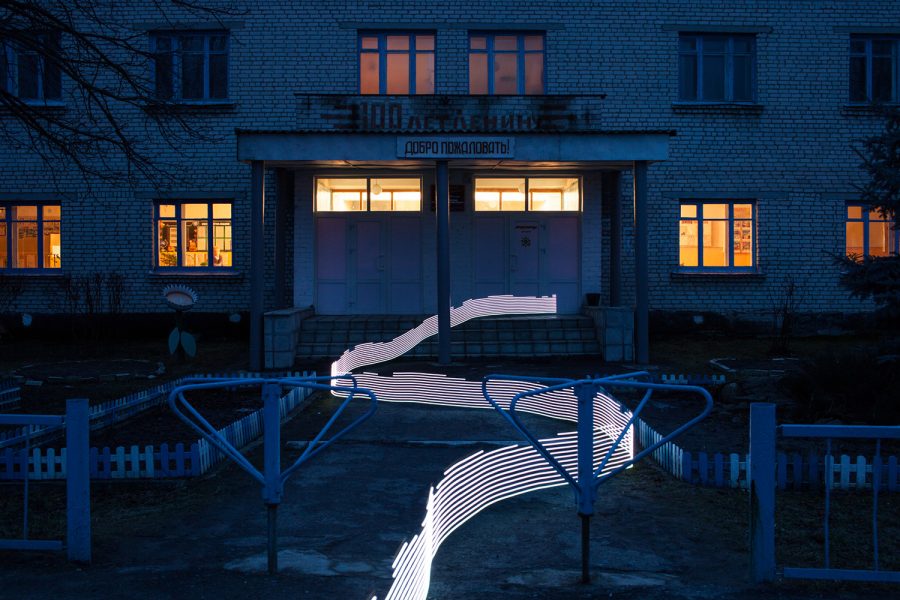
Here white light shows contamination levels between 0.16uSv/h and 0.26uSv/h.
30 years after the 1986 Chernobyl n
[caption id="attachment_11451" align="aligncenter" width="900"]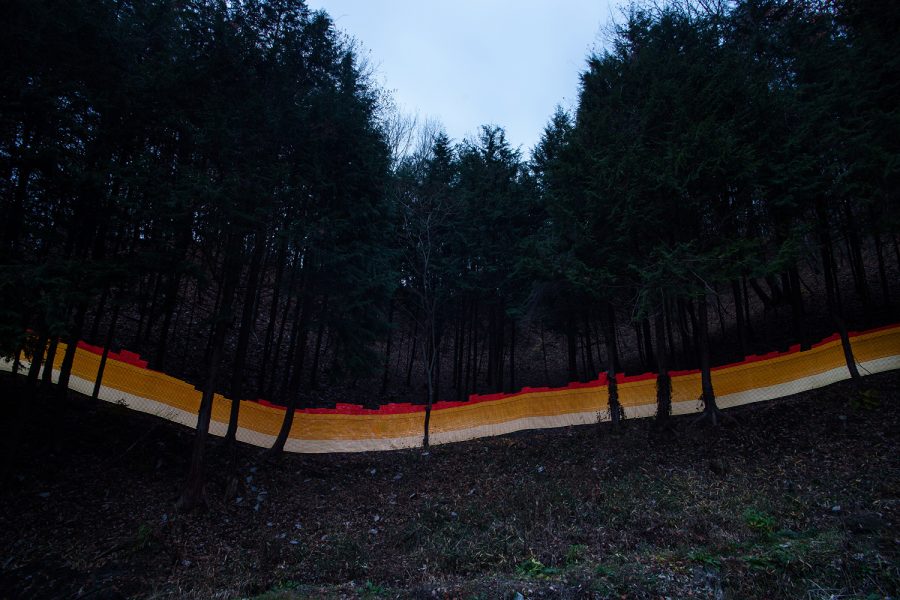 A special light painting technique reveals radioactive contamination in a forest bordering the Sato family house in Iitate. The forest has been decontaminated, but authorities only do 20 metres in from the edge, with everything beyond falling under the responsibility of a separate government agency. Forest beyond the 20 metre boundary is not decontaminated, leading to constant re-contamination of the lower forest and house that borders it. Here we see radiation levels between 0.97uSv/h and 1.4uSv/h, with yellow showing spots elevated above the government decontamination target of 0.23 uSv/h, and red showing above 1uSv/h.
A special light painting technique reveals radioactive contamination in a forest bordering the Sato family house in Iitate. The forest has been decontaminated, but authorities only do 20 metres in from the edge, with everything beyond falling under the responsibility of a separate government agency. Forest beyond the 20 metre boundary is not decontaminated, leading to constant re-contamination of the lower forest and house that borders it. Here we see radiation levels between 0.97uSv/h and 1.4uSv/h, with yellow showing spots elevated above the government decontamination target of 0.23 uSv/h, and red showing above 1uSv/h.

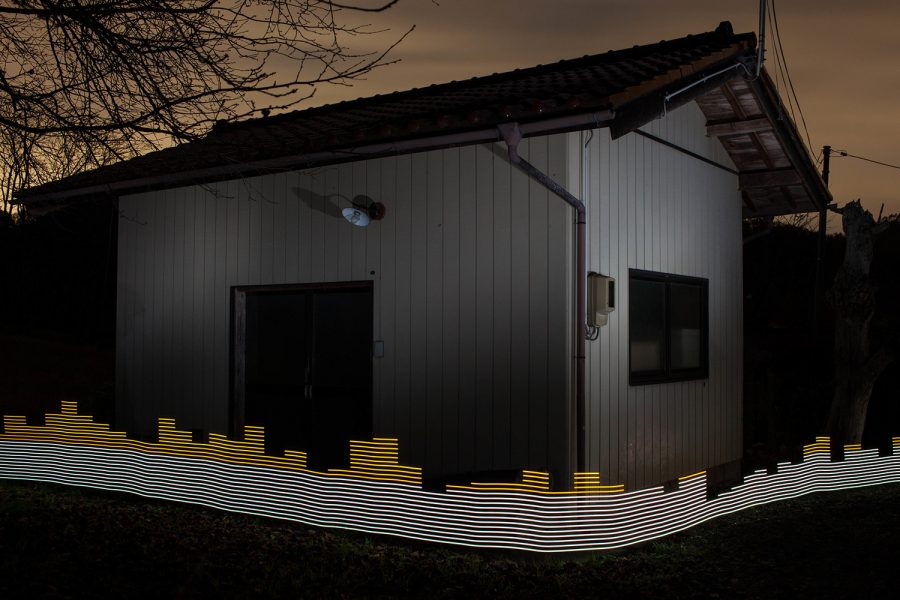 Radioactive contamination around a storage shed is revealed at the Sugano house in Ryozen, Date, using a special light painting tool. Surrounded by orchards and forest, the Sugano’s property was decontaminated by officials, but it is continually re-contaminated by the surrounding land which was not comprehensively cleaned. Here we see radiation levels between 0.24uSv/h and 0.34 uSv, with yellow[caption id="attachment_11455" align="aligncenter" width="900"]
Radioactive contamination around a storage shed is revealed at the Sugano house in Ryozen, Date, using a special light painting tool. Surrounded by orchards and forest, the Sugano’s property was decontaminated by officials, but it is continually re-contaminated by the surrounding land which was not comprehensively cleaned. Here we see radiation levels between 0.24uSv/h and 0.34 uSv, with yellow[caption id="attachment_11455" align="aligncenter" width="900"] Radioactive contamination around a storage shed is revealed at the Sugano house in Ryozen, Date, using a special light painting tool. Surrounded by orchards and forest, the Sugano’s property was decontaminated by officials, but it is continually re-contaminated by the surrounding land which was not comprehensively cleaned. Here we see radiation levels between 0.24uSv/h and 0.34
Radioactive contamination around a storage shed is revealed at the Sugano house in Ryozen, Date, using a special light painting tool. Surrounded by orchards and forest, the Sugano’s property was decontaminated by officials, but it is continually re-contaminated by the surrounding land which was not comprehensively cleaned. Here we see radiation levels between 0.24uSv/h and 0.34
[caption id="attachment_11449" align="aligncenter" width="900"]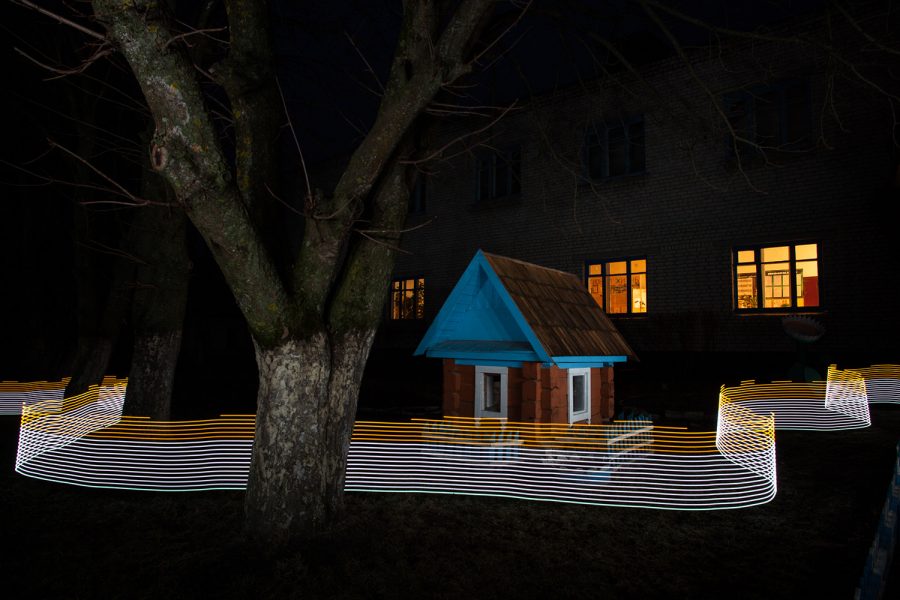 A special light painting tool displays radiation levels in real-time at a school in Starye Bobovichi.
A special light painting tool displays radiation levels in real-time at a school in Starye Bobovichi.
Here white light shows contamination levels up to 0.23uSv/h, while orange highlights elevated levels – from 0.30uSv/h to 0.65uSv/h around these trees and children’s play house.
30 years after the 1986 Chernobyl nuclear disaster, the schoolyard still contains areas of elevated radiation levels.
uSv, with yellow showing spots elevated above the government decontamination target of 0.23 uSv/h.[/caption] showing spots elevated above the government decontamination target of 0.23 uSv/h.[/caption]Fukushima city.” width=”900″ height=”600″ class=”size-medium wp-image-11457″ /> A special light painting tool reveals radiation levels at Soramame nursery school in Fukushima city.[/caption]e the government decontamination target of 0.23 uSv/h, and red showing above 1uSv/h.[/caption]uclear disaster, the schoolyard still contains areas of elevated radiation levels.[/caption]tent/uploads/2016/06/radiation_012-900×600.jpg” alt=”A light painting technique reveals radioactive contamination at a rice field in Onami, Fukushima. Here we see radiation levels between 0.22uSv/h and 0.40 uSv, with yellow showing spots elevated above the government decontamination target of 0.23 uSv/h. Onami was one of the very first areas to undergo decontaminati
on work.” width=”900″ height=”600″ class=”size-medium wp-image-11453″ /> A light painting technique reveals radioactive contamination at a rice field in Onami, Fukushima. Here we see radiation levels between 0.22uSv/h and 0.40 uSv, with yellow showing spots elevated above the government decontamination target of 0.23 uSv/h. Onami was one of the very first areas to undergo decontamination work.[/caption]